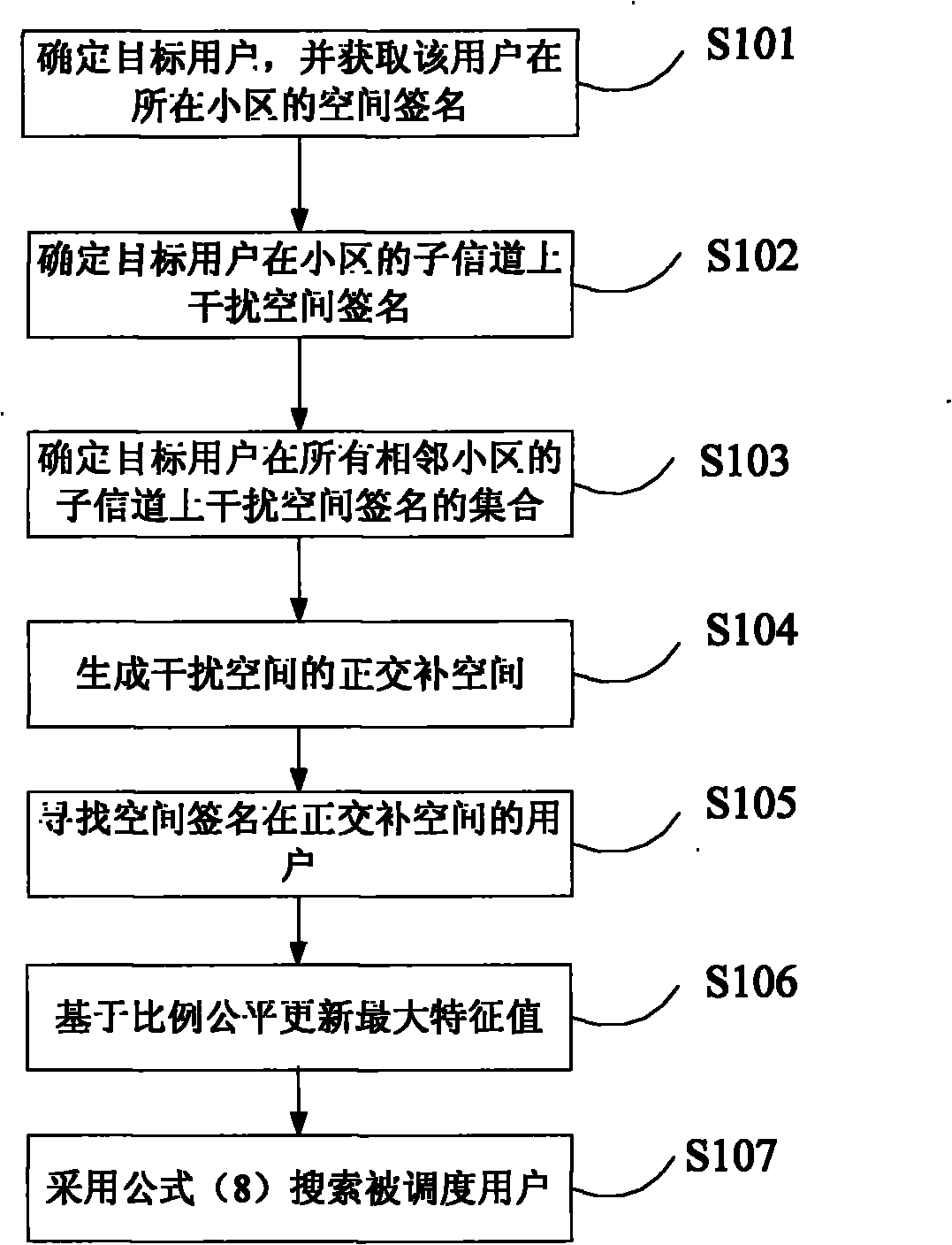Interference coordination-based inter-cell user scheduling method
A technology for interference coordination and user scheduling, applied in the field of communication, can solve the problems of high complexity, difficult to implement, low efficiency, etc., to achieve the effect of improving utilization and suppressing inter-cell interference
- Summary
- Abstract
- Description
- Claims
- Application Information
AI Technical Summary
Problems solved by technology
Method used
Image
Examples
Embodiment Construction
[0024] The invention proposes an interference coordination-based inter-cell multi-user scheduling method. According to the channel information fed back by the user, the beamforming vector is constructed, and the interference space is formed. Based on the orthogonal complement space of the interference space, an interference coordination algorithm is proposed. Further, based on the consideration of user fairness, an interference coordination algorithm based on proportional fairness is proposed. . The algorithm not only has strong distributed characteristics, that is, no base stations need to exchange information, but also effectively suppresses inter-cell interference and improves the utilization rate of wireless channel resources.
[0025] The technical solution of the present invention is generally described below:
[0026] It is assumed that there are B cells in the MIMO-OFDMA system, and the cells are not divided into sectors. The base station is in the center of the cell...
PUM
 Login to View More
Login to View More Abstract
Description
Claims
Application Information
 Login to View More
Login to View More - R&D
- Intellectual Property
- Life Sciences
- Materials
- Tech Scout
- Unparalleled Data Quality
- Higher Quality Content
- 60% Fewer Hallucinations
Browse by: Latest US Patents, China's latest patents, Technical Efficacy Thesaurus, Application Domain, Technology Topic, Popular Technical Reports.
© 2025 PatSnap. All rights reserved.Legal|Privacy policy|Modern Slavery Act Transparency Statement|Sitemap|About US| Contact US: help@patsnap.com



